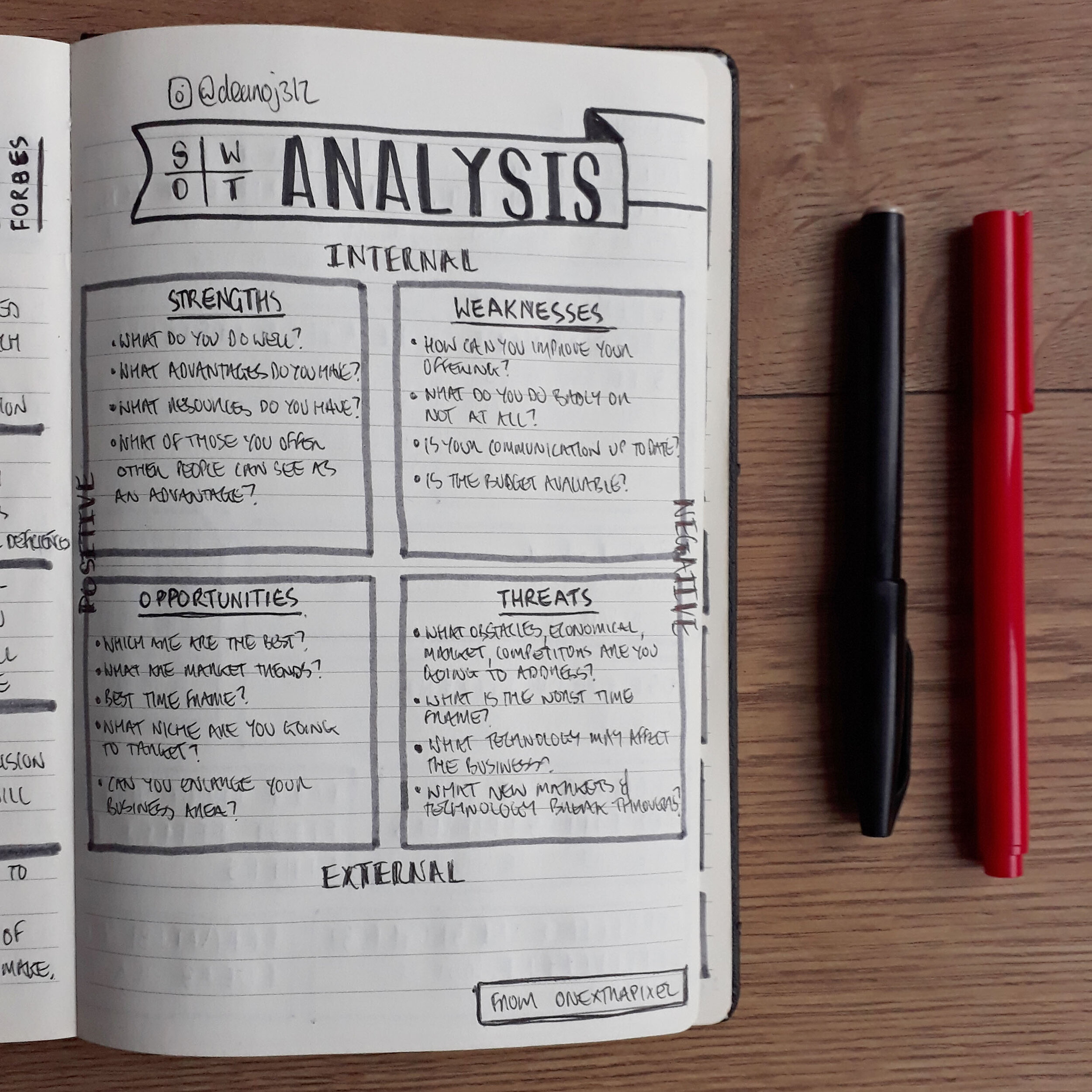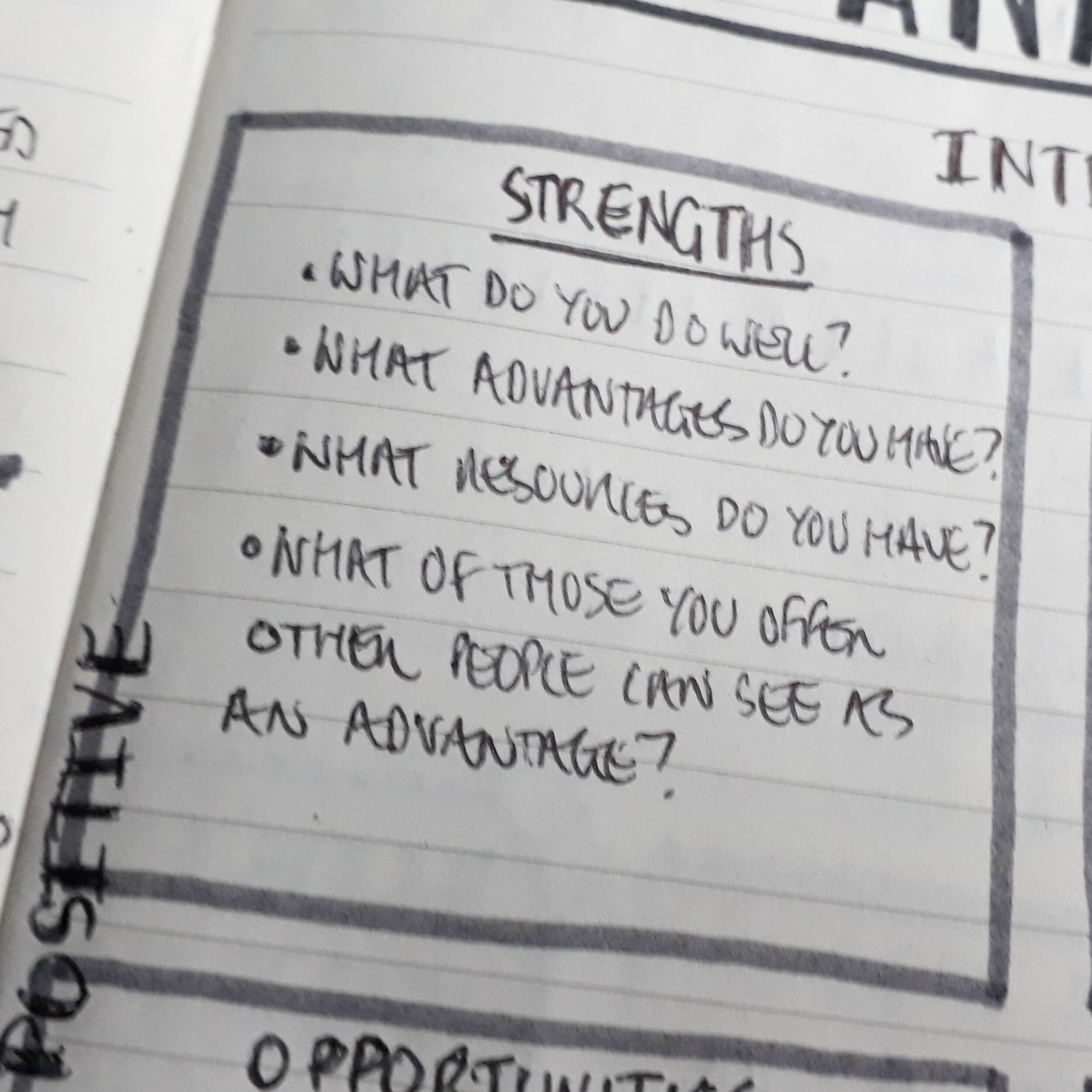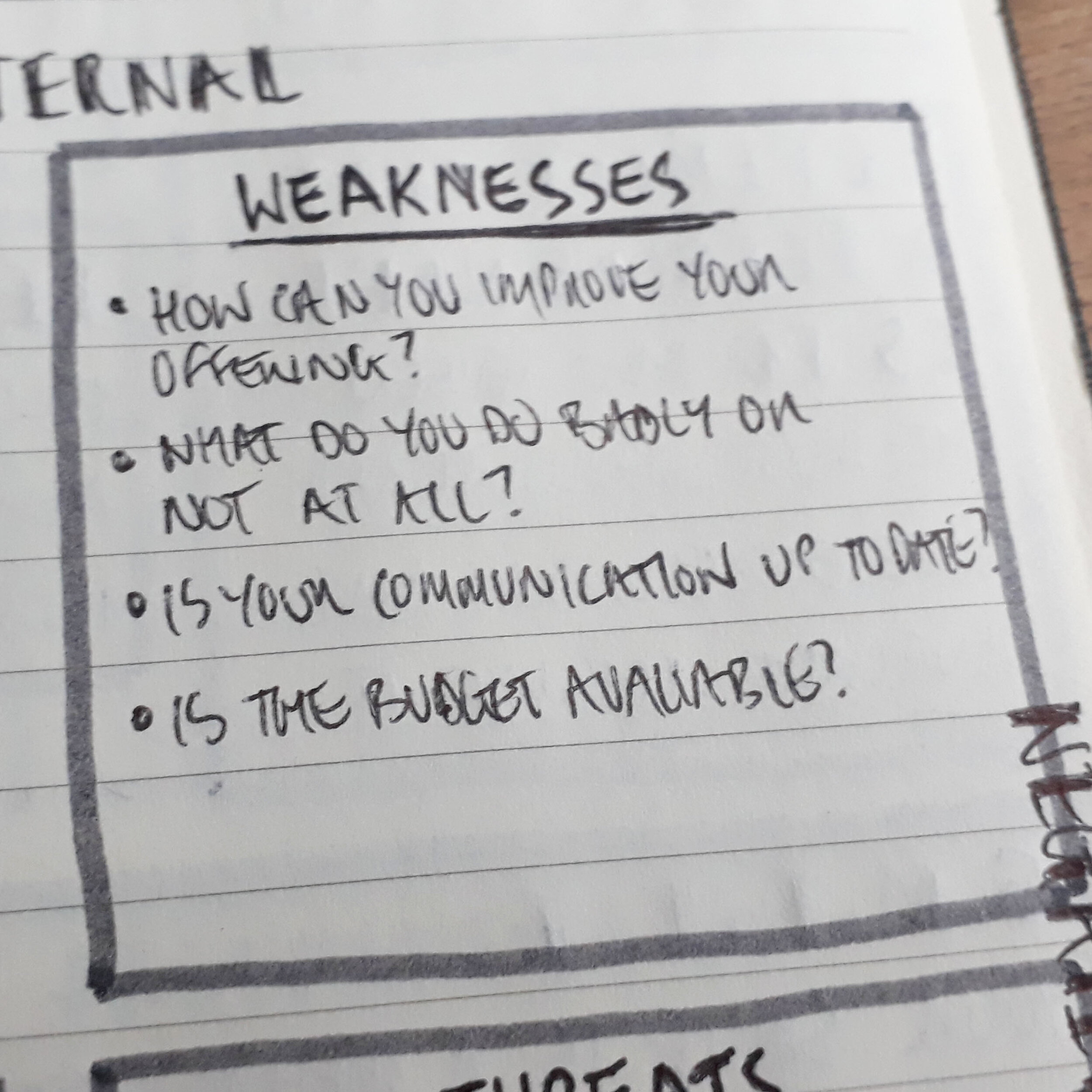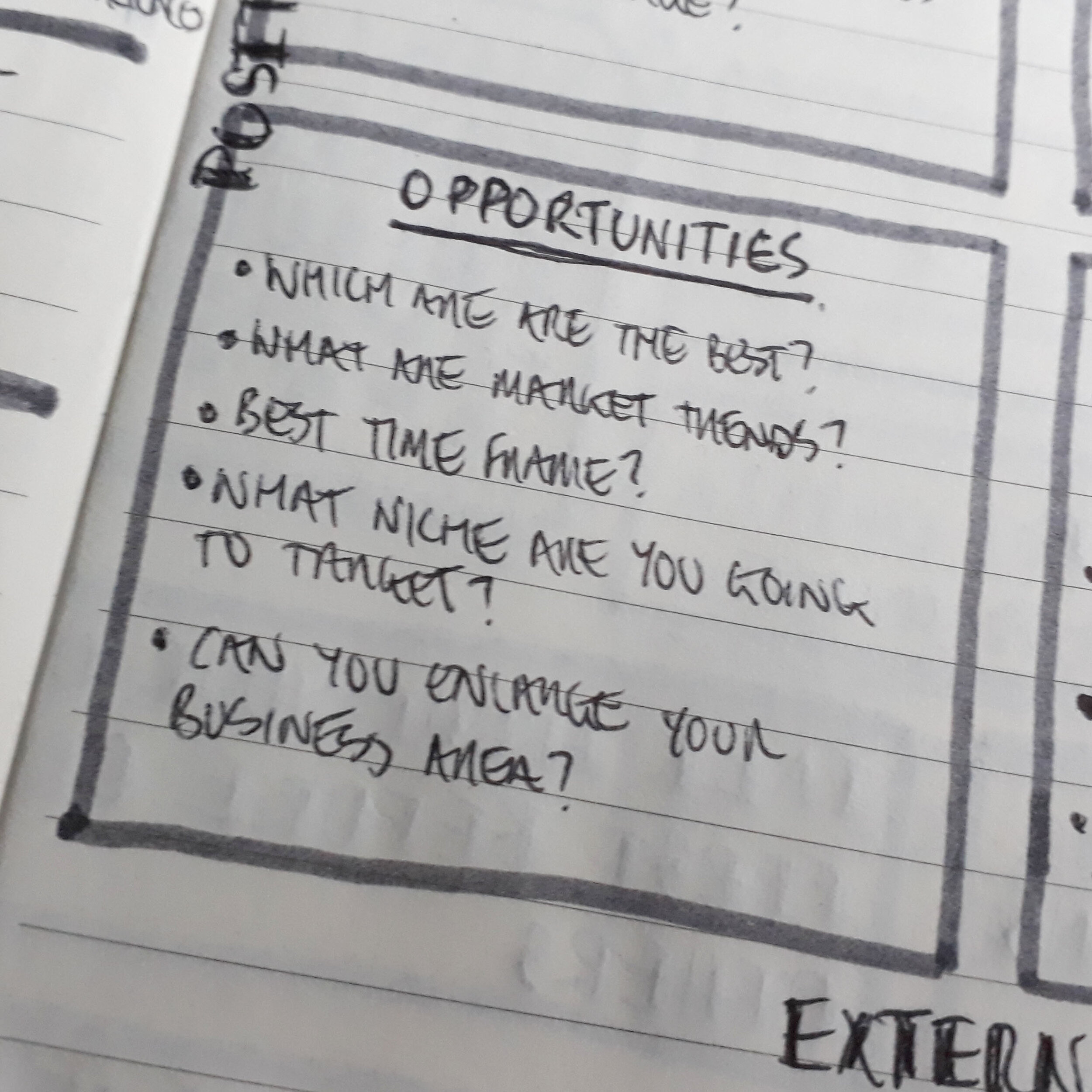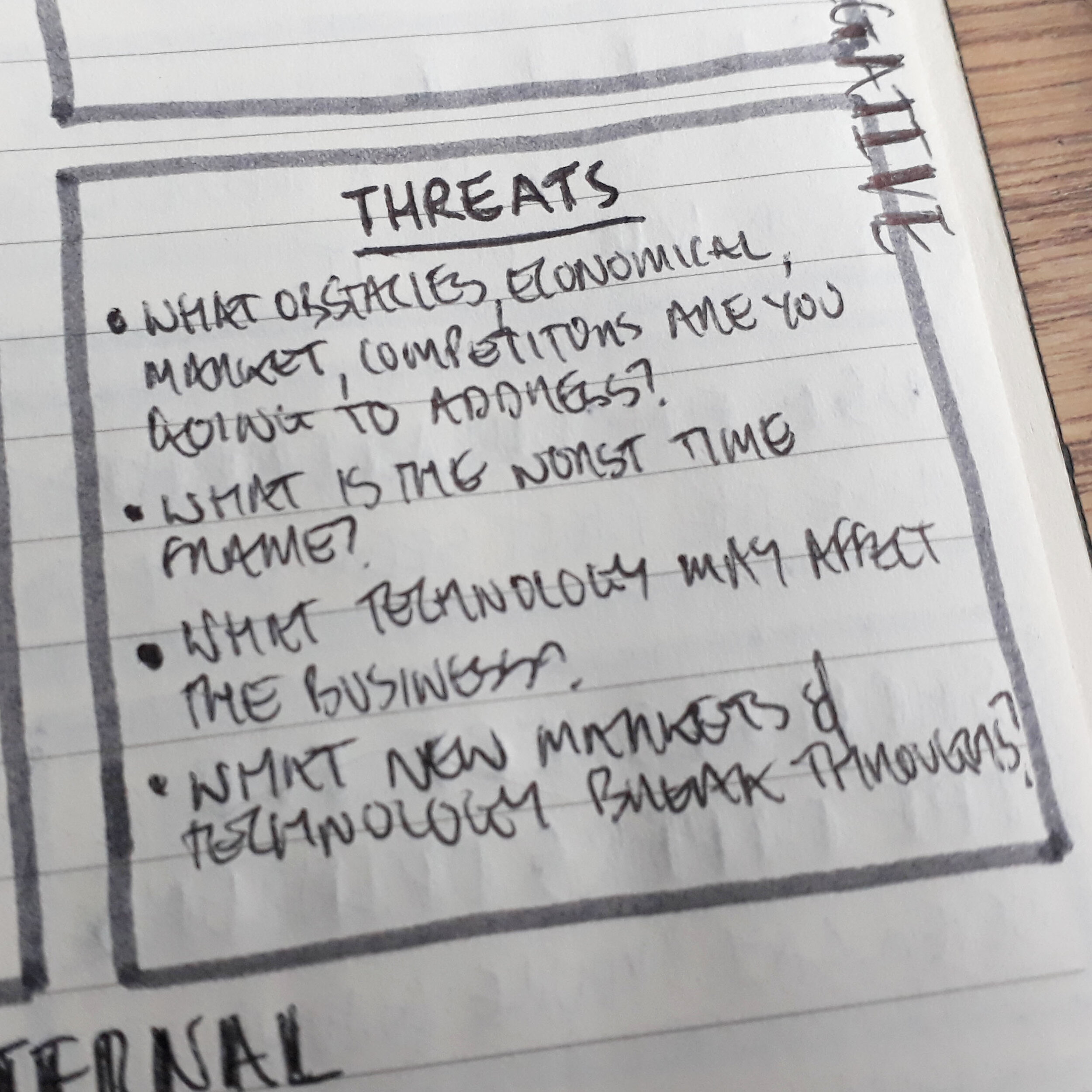Deep Dive: SWOT Analysis
Image courtesy of @mael_bld via Unsplash.
The deep dive series is an ongoing blog series in which we use nudenotes to breakdown complex business and design processes, techniques, principles and ideologies.
The goal is to become more effective creative professionals, improve our businesses and empower you with the knowledge and skills to build better solutions for consumers and clients.
So grab your flippers and your diving mask, we are about to go deep.
SWOT analysis is ubiquitous in business, it's a powerful tool to use in any project or business.
If done correctly it can unearth very powerful insights which can be the difference between failure and success.
Image courtesy of @juliandufort via Unsplash.
So, what exactly is it?
It’s simply a framework anyone can use to analyze your internal business, an individual project or a brand, in an in-depth and informative way.
The framework is made up of a grid of 4 sections: Strengths, Weaknesses, Opportunities and Threats.
It will enable you to objectively critique the subject and allow you to build and align business trajectories, sticking-points, set goals and benchmarks based on a real environment in which your project, brand or business lives.
Image courtesy of @juliandufort via Unsplash.
Why do I need it?
Right about now you're probably thinking, this is business jargon, one of those pointless exercise business consultants use to make them sound clever.
Wrong!
SWOT analysis can help any creative or business professional to gain better insights on how things work within the business and how to improve them.
Projects, businesses and brands are a complex web of people, systems and products - it’s easy to get lost in the fog or stuck in a rut just working.
A SWOT analysis allows you to lift the fog and gain a clear insight on a project, business or brand and the environment it lives in.
It’s a flexible framework which can be used to analyse many things you may encounter during your working day, a new ad campaign, new product or service or a new business acquisition.
The most important reason you need more SWOT analysis in your day-to-day work life is that it provides an easy way to identify problems and tangible steps to solve them.
Image courtesy of @juliandufort via Unsplash.
How do I create a SWOT analysis?
Once you have drawn out the basic four-quadrant grid, there’s no set way to fill it in - often you will find yourself bouncing from one section to another.
When you discover a strength, it usually links to weaknesses, and vice-versa for opportunities and threats - you may find some pieces of information have links to all four sections.
When filling out these sections, you should ask yourself these two questions:
What’s the most important thing right now?
What’s the most important thing in a few years?
Sometimes it can be helpful to do multiple SWOT analysis, one for now and one for the future.
This can help you to spot key areas that your business will need to address to reach a desired future state.
I find it is always best to start rough, either using good old fashion pen and paper, or if you're working as part of a team or want to work at a larger scale - using white boards and sticky notes work great too, especially when everyone gets involved.
Doing short sprints of people adding to the framework, then reviewing as a team can maximise the collaboration and ensure everyone's insights are heard.
Image courtesy of @juliandufort via Unsplash.
Let’s break down the FOUR sections...
Time to dive deep into the information you will need to fill out each one - questions that need answering and tips and techniques to get that information.
Strengths
This is where you record the positives, the things your company does particularly well.
For example: brand value, cash flow, unique selling point, your staff, USP, low manufacturing cost or design ability.
Strengths should be exploited for future opportunities for growth, and to avoid threats. Normally, when filling in strengths there should be information you can add into these to sections. For example:
Strength: Unique selling point, a new feature not currently in the market.
Opportunity: Leverage the new feature in the market.
Threat: A competitor copying the idea in the market.
Here are some prompting questions to help you fill in this section:
What does your business, brand or product do well?
What advantages does your business, brand or product have over the competition?
What resources do you have available or access to?
What can you offer consumers that others can not?
Weaknesses
This is where you record the negatives, what are the barriers within your business, project or brand.
For example: obsolete technology, poor products, budget limitations, lack of staff or resources.
It kind of goes without saying, but you should try and minimise or eliminate risks wherever possible.
When filling in this section think about the yin to the weakness’ yang, look for opportunities for change and growth in here.
Here are some prompting questions to help you fill in this section:
How can you improve your brand, product or service?
What do you do badly or (not at all)?
Is your communication clear, concise and compelling?
Is your branding on point?
Do you have a good and real target audience?
Do you have any budget?
Opportunities
This is where you record the scope for taking advantage of growth, anything to improve your sales and grow your business or brand.
For example: a new technology, targeting a new audience.
Often opportunities come out of a PEST analysis - more on this in a future Deep Dive Blog Article.
PEST analysis uses the same framework as a SWOT, but focuses on the external aspects.
PEST stands for: Political, Economic, Socio-Culture and Technological.
Here are some prompting questions to help you fill in this section:
What are the trends in the market?
Is there an undiscovered audience?
What’s the best time frame?
Are there new or emerging technologies to take advantage of?
What’s your niche?
Can you expand your business?
Threats
This is where you record the things, often outside the business that can negatively impact your business, brand or project - all the risks in your project, business or brand.
For example: a change in product regulations, new competition in the market, technological advancements, shipping tariffs.
Like opportunities, threats often come out of PEST analysis - but remember: a threat to one person, is an opportunity for another.
Here are some prompting questions to help you fill in this section:
What’s the worst time frame?
What technology advancements may affect the brand, project or business?
Ignored new markets?
Are there any economical, marketplace or competition obstacles in your market?
When you’re finished filling out these sections, there are several ways of grouping them together during your analysis, such as:
Strengths and Weaknesses relate to the internal factors that affect your business. These are often things under your control.
Opportunities and Threats relate to external factors that affect your business. These are often things outside of your control.
Weaknesses and Threats are all the negatives.
Strengths and Opportunities are all the positives.
Grouping these sections in this way can be helpful in developing strategies for your next steps and ways to move toward your projects, brands or businesses' future desired state.
That’s all for this deep dive, and time to get out of these wetsuits and flippers so we can start implementing what we have learned!
Any questions about SWOT Analysis leave them in the comments below.
More deep dives coming in the future: watch this space.
A quick shout out to my resources and inspiration for writing this deep dive: Douglas Davis, Chris Do, and all the information from trawling the internet for golden nuggets of insight and note forgetting my old university lecturer for introducing me to these principles all those years ago.







